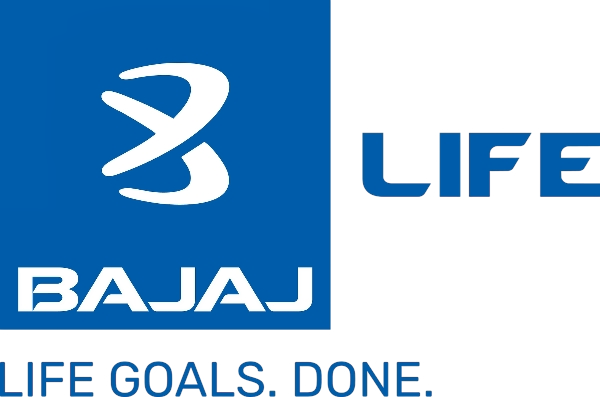Financial Independence, Retire Early (FIRE): What is it and How Does it Work?
Financial Independence, Retire Early (FIRE) is a lifestyle movement focused on achieving financial freedom by aggressively saving—often 50% to 70% of income—and disciplined investing to retire decades earlier than the traditional age. Originating from the 1992 book Your Money or Your Life, FIRE encourages living frugally and building a retirement corpus that generates passive income to cover living expenses indefinitely. This philosophy empowers individuals to gain control over their time, pursue passions, and enjoy life on their own terms, often retiring in their late 30s or 40s instead of their 60s.
- Term Insurance
- Investment Plan
What is the Purpose of the FIRE Concept?
The primary purpose of the FIRE strategy is to provide individuals with financial independence and the option to retire early. This approach empowers people to take control of their finances, escape the traditional form of retirement, and pursue personal passions or spend more time with loved ones. Key objectives include:
-
Achieving Financial Freedom: Building a portfolio that generates sufficient passive income to cover living expenses without relying on employment.
-
Mindful Spending: Encouraging frugality and financial discipline by minimizing unnecessary expenses and focusing on long-term goals.
Who Should Consider Financial Independence and Early Retirement?
The FIRE movement appeals primarily to individuals who value control over their time and lifestyle. It is especially suited for:
-
People with high incomes who can save aggressively while maintaining modest lifestyles.
-
Those willing to make significant lifestyle adjustments, such as downsizing homes or cutting unnecessary spending.
-
Professionals in high-income fields who can leverage side hustles or investments to accelerate savings.
-
People comfortable with long-term investment strategies that may involve higher risk.
How Does FIRE Work?
The FIRE concept operates on two fundamental financial principles:
-
The 25x Rule: Save at least 25 times your annual expenses to build a retirement corpus. For example, if your annual expenses are ₹10 lakhs, you would need ₹2.5 crores in savings.
-
The 4% Rule: Withdraw approximately 4% of your savings annually (adjusted for inflation) during retirement without depleting your funds.
To achieve these targets:
-
Save 50%–70% of your annual income by cutting unnecessary expenses.
-
Invest in high-return financial instruments like stocks, mutual funds, and ULIPs and pension plans.
-
Maintain a disciplined approach to tracking expenses and reallocating investments.
For instance, if someone earns ₹24 lakhs annually and saves ₹12 lakhs per year while requiring ₹10 lakhs annually for expenses, they could reach a corpus of ₹3 crores in about 25 years through disciplined saving and investing.
Different Types of FIRE
Here are some prominent variations of the FIRE concept.
-
Traditional FIRE
This is the most strict approach, requiring a savings rate of 50% or more of gross income. The goal is to accumulate 25 times your annual expenses, allowing for a safe withdrawal rate to sustain your lifestyle in early retirement. The traditional FIRE approach demands significant sacrifices in current spending.
-
Lean FIRE
Lean FIRE is all about maximizing frugality. Followers of this path focus on slashing expenses to the bare minimum—living in affordable locations, adopting a do-it-yourself mindset, and cutting out most non-essential spending. Because their cost of living is so low, they can retire with a much smaller savings target. However, this approach often means living a very simple lifestyle both before and after retirement.
-
Fat FIRE
Fat FIRE is designed for those who want a more luxurious lifestyle in retirement. While saving remains essential, the target retirement corpus is much higher. Fat FIRE followers may aim for a savings rate of 30–40%, enabling a comfortable post-retirement life with room for travel, hobbies, and other discretionary expenses.
-
Coast FIRE
Coast FIRE focuses on accumulating enough savings early on to cover basic living expenses by a certain age. After reaching this milestone, individuals can "coast" toward retirement by maintaining a lower-paying job or pursuing part-time work. This strategy offers more flexibility during the working years while still achieving a degree of financial independence earlier than traditional retirement.
-
Barista FIRE
Barista FIRE prioritizes early retirement even with a smaller savings pool. Individuals achieve financial independence but plan to supplement their income with part-time work—such as a barista job—during retirement. This approach allows for the pursuit of passions and interests while generating additional income.
The choice of FIRE variation depends on your individual circumstances, risk tolerance, and desired lifestyle in retirement. Carefully consider your spending habits, income potential, and long-term goals to determine the approach that best aligns with your vision of financial freedom.
Ways to Effectively Implement the FIRE Method
To effectively implement the Financial Independence, Retire Early (FIRE) method, individuals need to adopt disciplined financial habits and strategic retirement planning. Here are key approaches:
-
Draft a Budget: Begin by creating a detailed budget that categorizes income sources and expenses. This helps you identify areas to save and allocate funds for investments.
-
Reduce Expenses: Embrace frugal living by cutting unnecessary expenses. Downsizing homes, cooking at home, and opting for cost-effective living arrangements can significantly accelerate savings.
-
Increase Income: Explore opportunities to boost earnings, such as side hustles or career advancements, to increase the savings rate.
-
Invest Strategically: Invest in assets that generate passive income, such as stocks, real estate, or index funds. Tailor investments to your risk profile—aggressive investors may prefer equities, while conservative ones might opt for fixed deposits or government securities.
-
Monitor Progress: Regularly track financial progress to ensure alignment with goals. Adjust investment strategies as needed based on market conditions and personal circumstances.
Advantages and Disadvantages of the FIRE Method
| Advantages | Disadvantages |
| Allows retiring much earlier than traditional retirement age. | Requires significant reduction in current spending and lifestyle changes. |
| Provides independence from paycheck-to-paycheck living. | Demands strict budgeting, saving, and investing habits. |
| Enables pursuing passions, hobbies, or alternative careers post-retirement. | Investment returns can fluctuate, impacting retirement funds. |
| Reduces financial stress by building a solid financial cushion. | May not suit those with higher expenses related to family or health. |
| Promotes saving, investing, and mindful spending. | Early retirement might reduce social interactions linked to work. |
Key Component of the FIRE Strategy
A crucial element in the FIRE (Financial Independence, Retire Early) strategy is securing a reliable source of income for retirement, and buying a pension plan can play a significant role in this. While FIRE focuses on aggressive saving and investing, a pension plan offers guaranteed payouts that are not affected by market fluctuations, providing financial stability and peace of mind.
Including a pension plan helps mitigate risks associated with volatile investments and can offer tax advantages, enhancing overall retirement savings. Starting early contributions maximizes growth, and balancing pension income with other investments creates a diversified and secure financial foundation.
Conclusion
The FIRE method offers an innovative approach to achieving financial independence and retiring early by emphasizing aggressive saving, disciplined spending, and strategic investing. While it provides unparalleled freedom and security after retirement, it requires careful planning and significant sacrifices. The FIRE method is a powerful tool for those willing to commit to its principles and adapt their lifestyle accordingly.
FAQs
-
How much should I save for FIRE?
Typically, FIRE advocates saving 50-70% of your income. Using the Rule of 25, calculate your retirement corpus by multiplying your annual expenses by 25. For instance, if your yearly expenses are ₹10 lakh, aim for ₹2.5 crore. -
What are the key principles of FIRE?
-
Save aggressively (50-70% of income).
-
Live frugally by cutting unnecessary expenses.
-
Invest wisely in assets like low-cost index funds or mutual funds.
-
-
Is FIRE feasible in India?
Yes, FIRE is achievable in India with disciplined saving and investing. The growing gig economy, rising financial literacy, and access to investment platforms make it easier to pursue FIRE. -
What is the Rule of 25?
The Rule of 25 suggests that your retirement corpus should equal 25 times your annual expenses post-retirement. For example, if you need ₹1 lakh per month (₹12 lakh annually), you should accumulate ₹3 crore. -
What is the 4% rule for early retirement?
The 4% rule is a widely used guideline for early retirees following the FIRE method. It suggests withdrawing 4% of your total investment portfolio during the first year of retirement, with subsequent withdrawals adjusted annually for inflation. This approach aims to provide sustainable income over 30 years while preserving your savings. However, factors such as market performance, investment returns, and personal spending habits should be carefully considered when applying this rule. -
What is the 7% withdrawal rule?
The 7% withdrawal rule is another strategy for retirement planning that allows retirees to withdraw 7% of their portfolio in the first year, adjusting for inflation in following years. While this rule offers a higher initial income compared to more conservative approaches, it comes with an increased risk of depleting your savings prematurely, especially if market conditions are unfavorable.































